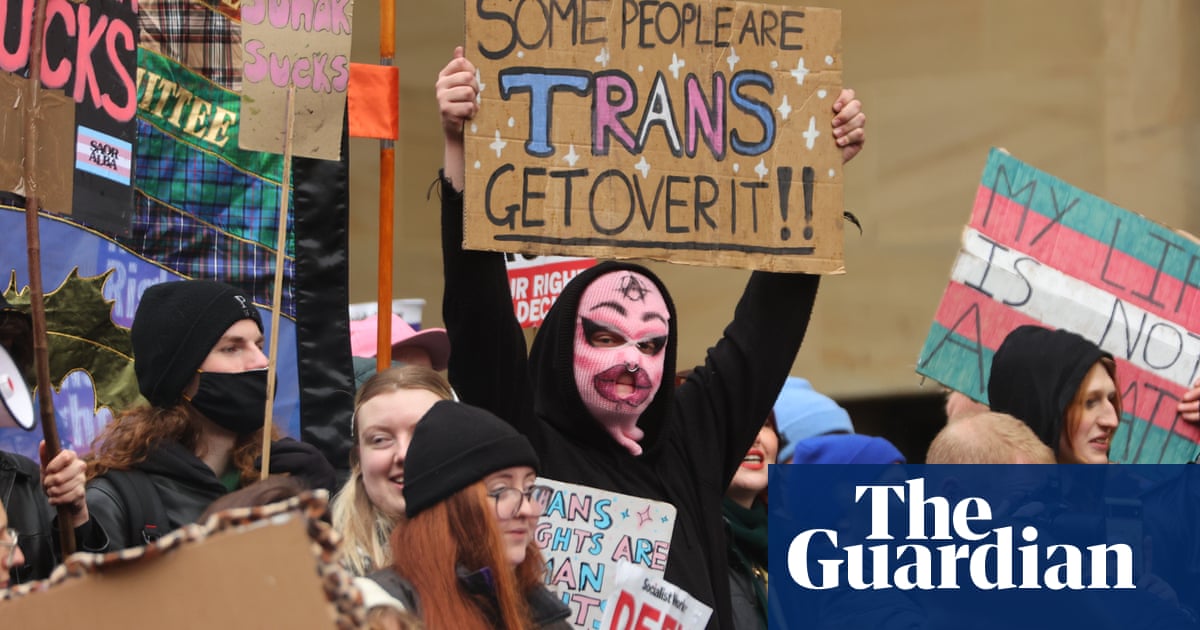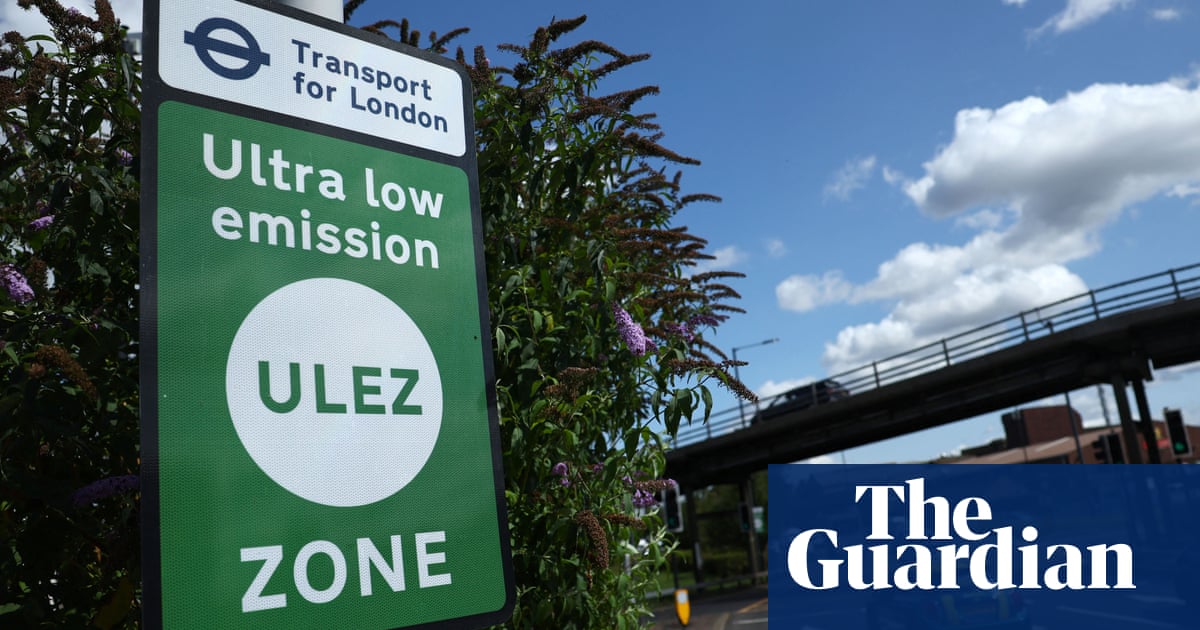
A major court battle between the Scottish and UK governments over the twin flashpoints of constitutional powers and gender recognition reform will begin in Edinburgh on Tuesday.
Why are the Scottish and UK governments in court?
Scottish ministers launched this court challenge after the UK government blocked a bill, passed by a cross-party majority in the Holyrood parliament last December, that would make Scotland the first part of the UK to introduce a self-identification system for people who want to change their legally recognised sex.
In January, the Scottish secretary, Alister Jack, made a section 35 order under the 1998 Scotland Act, which created the devolved parliament, to prevent the bill going for royal assent. It was the first time this veto had been used and was described by UK government sources as “the nuclear option”.
Both Jack and the UK equalities minister, Kemi Badenoch, have argued the Holyrood bill waters down protections for single-sex spaces and contravenes UK-wide equality legislation by imposing a different regime for one devolved country.
This judicial review is expected to take three days, in the outer house of the court of session in Edinburgh, and takes place before a single judge, Lady Haldane.
What does the Holyrood gender recognition reform bill actually do?
One of the Scottish National party’s flagship bills, it introduces a system of self-declaration for obtaining a gender recognition certificate (GRC). It will remove the need for a psychiatric diagnosis of gender dysphoria and reduce the time someone must have been permanently living in their gender before they can apply, from two years to three months – or six months for 16- and 17-year-olds. The age at which people can apply will drop from 18 to 16.
Proponents of the changes hope they will streamline a process that many transgender people find intrusive and distressing, but not affect the spaces or services they use in their day-to-day lives.
Critics argue that the simplification – also known as self-identification – will fundamentally alter who can access women-only services and leave them vulnerable to abuse by predatory male offenders. And since the bill was passed, a number of high profile cases have underlined these concerns, in particular that of Isla Bryson, a double rapist who committed offences before they transitioned and whose initial remand in an all-women prison resulted in a public outcry.
But the involvement of Badenoch, a keen participant in culture war issues, in Westminster’s intervention bolstered the suspicion that some ministers want to create a political wedge over transgender rights ahead of the next general election.
What are the constitutional implications for the case?
Given this is the first exercise of section 35 powers, this judicial review takes both governments into uncharted territory. The row is likely to play out over months and years, rather than weeks, since the expectation is that whoever loses at this initial stage will appeal to the next level of Scottish court and then to the supreme court in London.
During the SNP leadership contest to succeed Nicola Sturgeon, Humza Yousaf was the only candidate who pledged to keep Sturgeon’s commitment to a court challenge, arguing that not contesting the veto would risk setting a precedent for future Westminster interference.
The Welsh first minister, Mark Drakeford, described the decision to use a section 35 order as “a very dangerous moment” and has since then begun attempts to introduce similar gender ID reforms to the Senedd.
While Downing Street’s approach to devolution has departed from the muscular unionism of the Boris Johnson era, the Scottish secretary has intervened recently in several other pieces of Holyrood policy, including a bottle recycling scheme and efforts to incorporate the UN children’s rights charter into domestic legislation.
How is the court challenge viewed across the Holyrood parliament and Scottish society?
The SNP suffered its biggest ever backbench revolt at stage one of the bill, with a government minister resigning in order to vote against it. The changes were a key plank of the Scottish Greens’ cooperation agreement with the nationalists, now itself under attack from some SNP MSPs who believe it has mired their party in unpopular policies.
More practically, with polling suggesting that the Scottish public do not prioritise this reform and that support for the SNP is slumping, there are internal concerns that the government is expending political capital at a time when they should be focused on the cost of living crisis.
The subject of gender recognition reform has proved similarly toxic for Labour, with an emerging split between the Scottish and UK parties. Keir Starmer, the UK party leader, said the fierce Holyrood row convinced him that self-identification was “not the right way forward”, while Scottish Labour maintains a policy of demedicalisation for gender recognition.
Many MSPs also privately acknowledge the failure to bring the public with them on this subject, compounded by two horrific sexual assault cases involving transgender women, Bryson and Andrew Miller/Amy George, which came to light in the months after the bill’s completion.
Meanwhile transgender people in Scotland are left in limbo. Many would have preferred to see better healthcare or policing of hate crimes taking up ministers’ attention. The trans and indeed broader LGBTQ+ community in Scotland has also reported since the start of the year increased hostility online and on the street.












